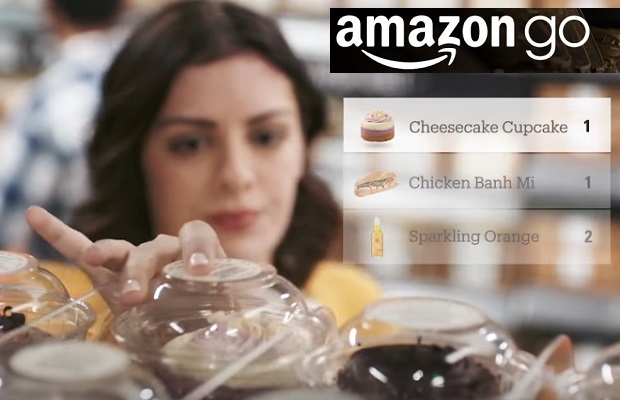Amazon has launched its first cashier-less grocery store, dubbed Amazon Go, after a year of tests.
The move marks Amazon’s first automated grocery store that promises, “no lines, no checkouts, no registers” and could be a game-changer for the grocery and retail industry
For now, Amazon is testing the concept on a limited basis and has no plans to implement the technology in Whole Foods.
The store, in downtown Seattle, occupies 1,800 square feet and offers everything from staples to snacks to alcohol.
Amazon Go uses hundreds of ceiling-mounted cameras and electronic sensors to identify each customer and track what items they select.
Purchases are billed to customers’ credit cards when they leave the store.
On entering the store, shoppers walk through gates similar to those in the London underground, swiping their smartphones loaded with the Amazon Go app.
Then they are free to put any of the sandwiches, salads, drinks and biscuits on the shelves straight into their own shopping bags.
View this video from USA Today explaining how it works:
Amazon Go will allow Prime members to literally grab and go. https://t.co/1Fslf8kkpZ pic.twitter.com/ymnKQDrpFj
— USA TODAY (@USATODAY) January 22, 2018
The, store, located close to Amazon’s Seattle campus, was supposed to open to the public in early 2017, according to the website.
Yet until now, it has remained in beta mode for Amazon employees only, and there were some teething problems with correctly identifying shoppers of similar body types – and children moving items to the wrong places on shelves, according to an Amazon insider.
Gianna Puerini, head of Amazon Go, said the store had operated well during the test phase: “This technology didn’t exist – it was really advancing the state of the art of computer vision and machine learning.”
In e-commerce, Amazon has already been investing heavily in automation, running the gamut from delivery drones to warehouse robots. At the same time, it’s been hiring thousands of new employees each year, growing headcount by 40 percent year over year.
With its purchase of Whole Foods last year for nearly $14 billion, it became the second biggest private employer in the country behind Walmart.
